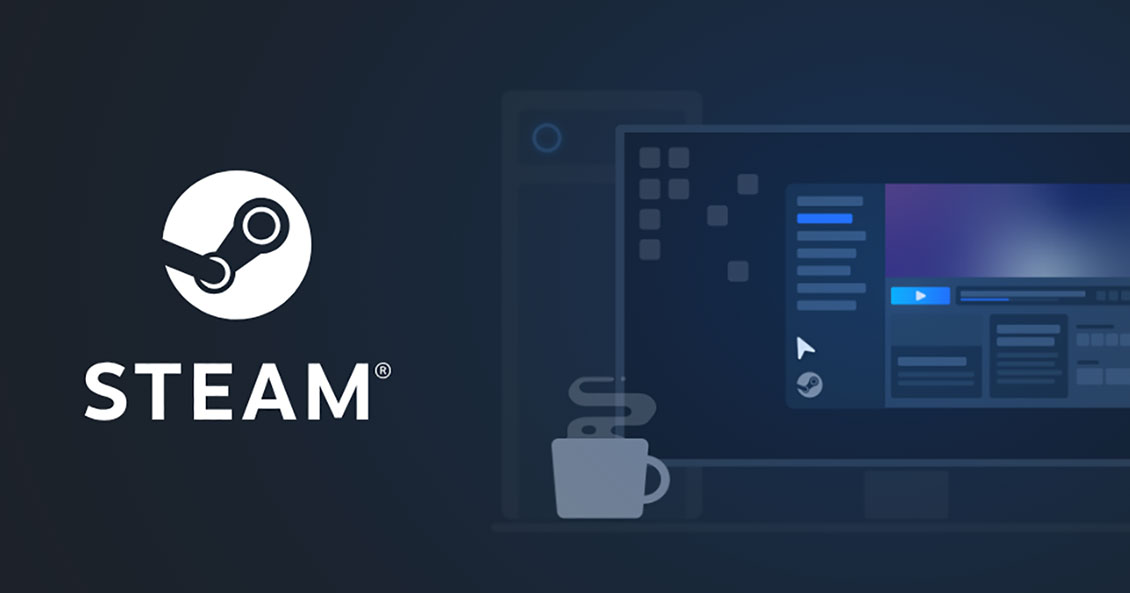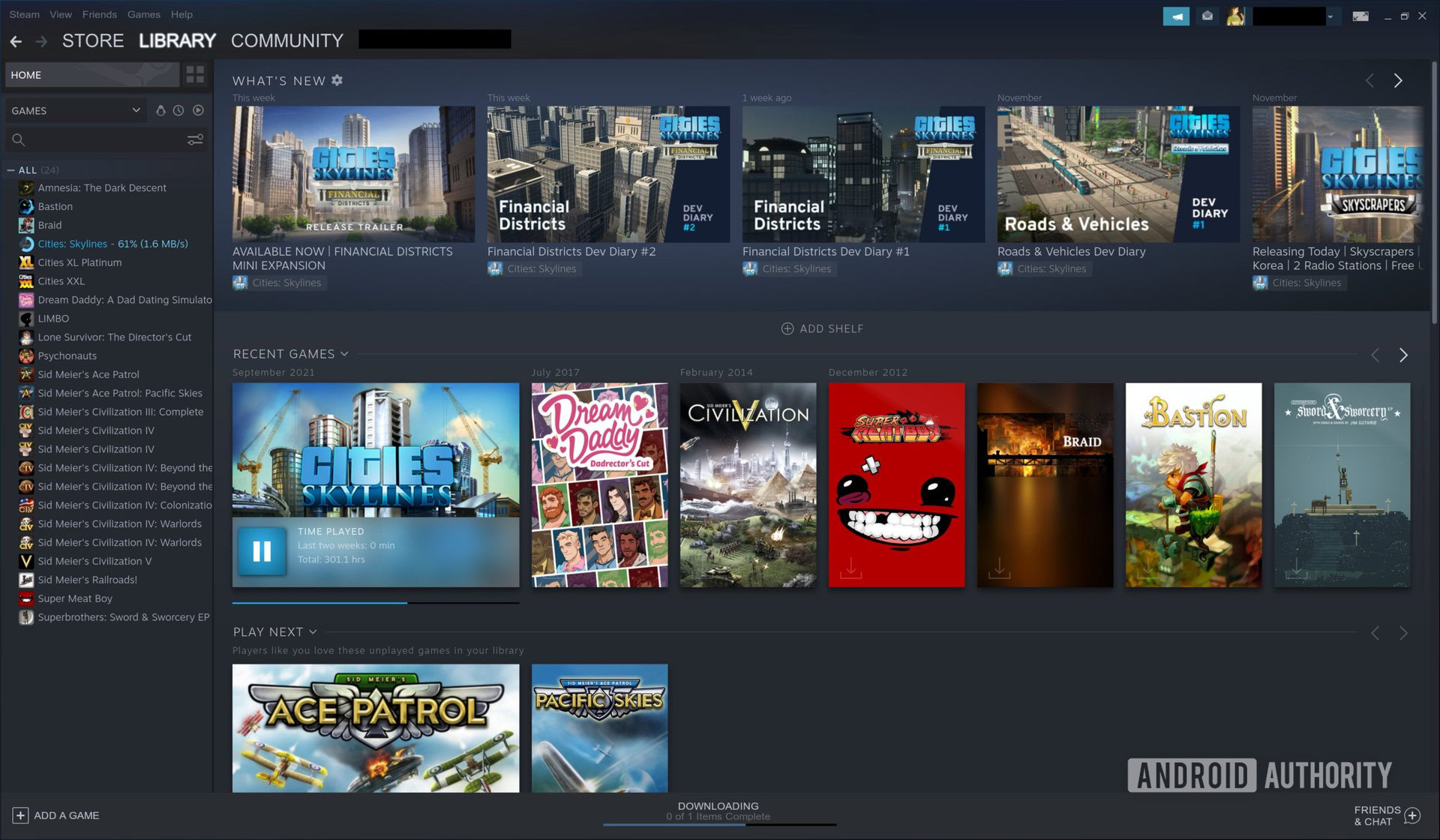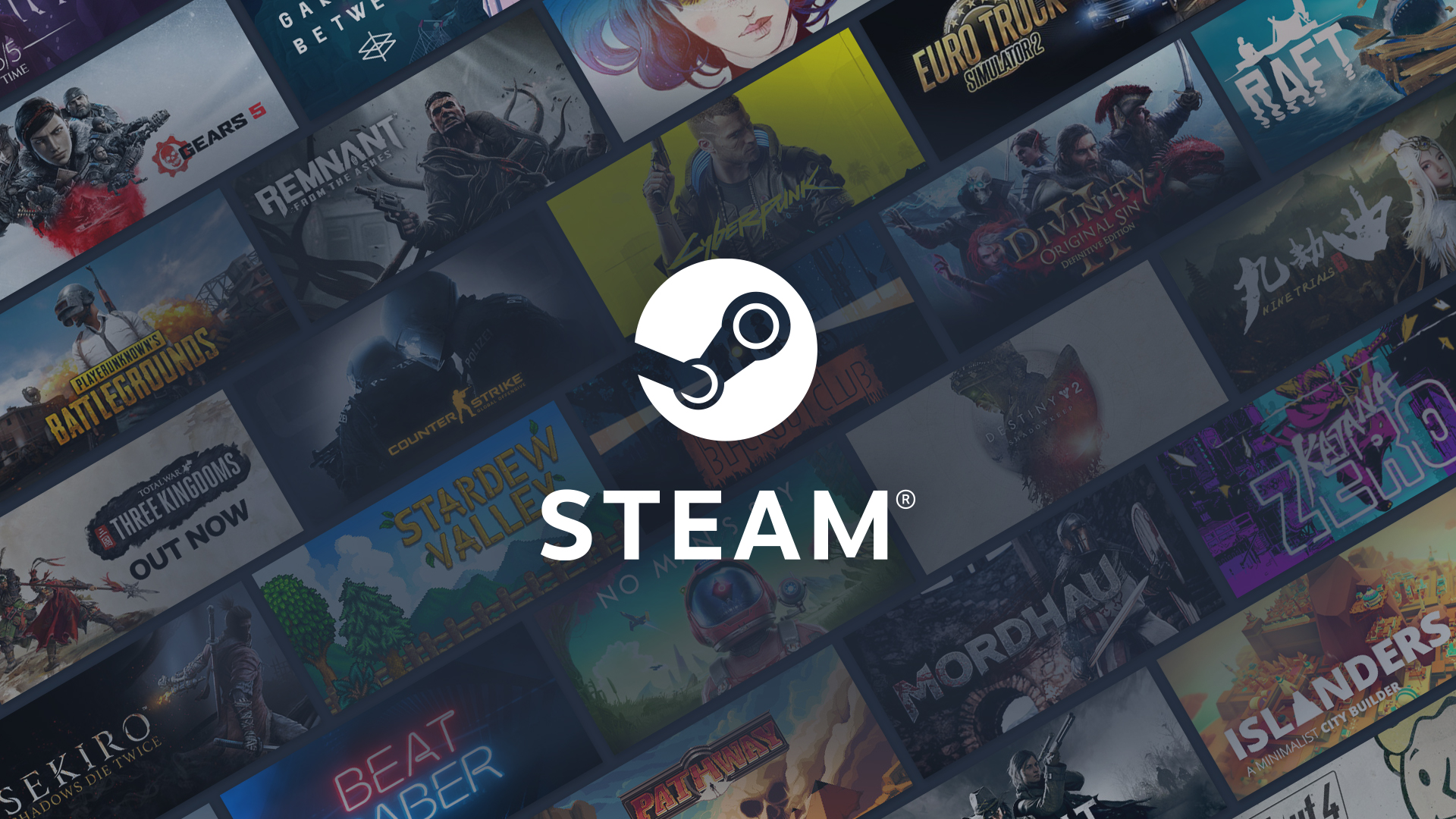Unraveling Steam's Digital Heartbeat: A DTI Perspective
In the vast and ever-expanding universe of digital entertainment, Steam stands as an undisputed titan. It's more than just a storefront; it's a sprawling ecosystem where millions of gamers converge to play, discuss, and create. But beneath its polished interface lies a complex network of systems, challenges, and user-driven solutions—a true "Steam Punk DTI" landscape that combines digital intricacy with a raw, problem-solving ethos.
From troubleshooting stubborn family sharing issues to deciphering cryptic CAPTCHA errors, and from optimizing download speeds to understanding the nuanced economy of trading cards, the Steam experience is a journey through a fascinating digital labyrinth. This article delves deep into the core mechanics, common pain points, and ingenious workarounds that define the everyday life of a Steam user, exploring the platform through the lens of its Digital Transformation and Intricacy (DTI).
Table of Contents
- The Beating Heart of Digital Gaming: Understanding Steam
- Navigating the Digital Maze: Common Steam User Challenges
- Optimizing Your Steam Experience: Performance & Management
- The Digital Economy of Steam: From Cards to Wallets
- Beyond the Library: Steam's Ecosystem & Future
- The "DTI" in Steam: Digital Transformation & Intricacy
- Mastering Your Steam Journey: A "Punk" Approach
The Beating Heart of Digital Gaming: Understanding Steam
Steam is widely recognized as "the ultimate destination for playing, discussing, and creating games." It's a platform that has redefined how PC games are distributed, purchased, and played. With "thousands of games to play with millions of new friends," it fosters a massive global community. Beyond just selling games, Steam integrates various features: a social network, a marketplace, achievement tracking, community hubs, and even hardware initiatives like the Steam Deck. This comprehensive approach showcases the platform's ongoing "Steam Punk DTI" – its continuous digital transformation and the intricate integration of diverse functionalities.
From the moment you create a free and simple account, you gain access to a vast catalog of Windows, Mac, and Linux titles. Steam's commitment to user experience extends to encouraging developers to support a wide array of controllers, including PlayStation, Xbox, and Nintendo, ensuring accessibility and comfort for diverse playstyles. This constant evolution and expansion are central to its role as a leading digital gaming platform.
Navigating the Digital Maze: Common Steam User Challenges
Despite its robust features, the journey through the Steam ecosystem isn't always smooth. Users frequently encounter technical hurdles that require patience and often, a bit of digital detective work. These challenges highlight the "punk" aspect of the "Steam Punk DTI" – the need for users to be resourceful and often DIY problem-solvers in a complex digital environment.
Family Sharing Frustrations: "Not the Same Household"
One of the most persistent complaints revolves around Steam Family Sharing. Many users report being unable to join a Steam Family Group, repeatedly encountering the message, "not the same household." This issue persists even after "numerous invitations" and attempts at various solutions, including "having friends log into my account locally to join." The frustration is palpable, often resulting in "red text" errors.
While Steam's official stance emphasizes that family sharing is intended for members of the same physical household, the digital nature of the platform often clashes with this real-world limitation. Solutions can be elusive, but often involve:
- Ensuring both accounts are authorized on the same physical machine.
- Temporarily disabling VPNs or network proxies that might obscure geographical location.
- Verifying that both users have active, non-restricted accounts.
- Sometimes, a simple network reset or router reboot can resolve underlying connectivity issues that might be misinterpreted by Steam's system.
The CAPTCHA Conundrum & Account Access Hurdles
Another common stumbling block, particularly during account creation or login, is the "CAPTCHA response seems invalid" error, often accompanied by a "Quote ID." This issue can prevent users from even getting started on Steam. Beyond CAPTCHA, the variety of login options—from "QQ login" and "WeChat login" to "mobile number login," "Alipay login," and even "Douyin login"—can be overwhelming for new users, especially those outside of specific regions.
To tackle CAPTCHA issues, ensure your browser is up-to-date, clear your cache and cookies, and try a different browser or device. Network connectivity issues can also interfere with CAPTCHA validation. For diverse login methods, it's crucial to understand which are applicable to your region and account type, simplifying the initial access process into this "Steam Punk DTI" ecosystem.
Optimizing Your Steam Experience: Performance & Management
Beyond initial access, maintaining a smooth and efficient Steam experience requires understanding how to manage its performance and your digital assets. This is where the "DTI" aspect of data management and technical optimization comes into play, empowering users to take control.
Boosting Download Speeds: Beyond the Accelerator
A frequent complaint among Steam users is slow game download speeds, even with a paid accelerator. As the data suggests, "foreign software often doesn't have the same network support as domestic software" in certain regions. However, there are ways to improve speeds without spending more money:
- Change Download Region: In Steam settings, try switching your download region to a less congested server, even if it's geographically further away. Sometimes, a less busy server can offer better speeds.
- Reset Network Settings: As suggested by the data, "resetting network connections" can often solve connectivity issues. This typically involves:
- Clicking "Start" (Windows icon) on your computer.
- Navigating to "Windows System" or "Windows Administrative Tools."
- Opening "Control Panel."
- Going to "Network and Sharing Center" and then "Change adapter settings."
- Right-clicking on your active network adapter and selecting "Diagnose" or "Disable/Enable."
- Alternatively, using Command Prompt (as administrator) to run `ipconfig /release`, `ipconfig /renew`, and `netsh winsock reset`.
- Clear Download Cache: Steam has an option to clear its download cache, which can sometimes resolve persistent download issues.
- Prioritize Network Usage: Ensure no other applications are hogging bandwidth during downloads.
Game Uninstallation & Data Management: Keeping Your Drive Clean
When it's time to free up space, users often wonder how thoroughly Steam uninstalls games. The good news is that "uninstalling from the Steam library is already very clean." The primary remnants are typically "local game saves," which are usually "just some text, a few hundred KB at most," and "no need to worry about them."
However, for those who prefer absolute cleanliness or need to troubleshoot corrupted saves, you can manually delete game archives. To remove game saves, you typically need to navigate to: `C:\Users\[Your Username]\Documents\` and then locate the folder corresponding to the specific game. Some games might store saves in other locations like `AppData` (hidden folder), so a quick online search for the specific game's save location can be helpful. This granular control over data is another facet of the "Steam Punk DTI" experience, where users can delve into the system's technical underpinnings.
The Digital Economy of Steam: From Cards to Wallets
Steam isn't just about playing games; it's also a vibrant digital economy. From collectible trading cards to the integrated Steam Wallet, the platform offers numerous ways to engage with its digital assets and financial systems. Understanding these mechanisms is key to fully navigating the "Steam Punk DTI" marketplace.
Trading Cards & Badges: The Gamification of Ownership
A unique feature of Steam is its trading card system. "Games purchased on Steam will drop collectible trading cards during gameplay." Once you "collect a set (mostly five or six cards)," you can "craft a badge or upgrade an already crafted badge for that game, providing Steam account experience." This system extends to free-to-play games as well, with a similar drop mechanism. These cards can be traded or sold on the Steam Community Market, adding a layer of meta-gameplay and economic interaction to the platform. It's a clever gamification of ownership, turning game time into tangible (albeit digital) rewards.
Refunds and the Steam Wallet: Navigating Financial Transactions
Steam's refund policy is consumer-friendly, offering a safety net for purchases. Purchases are eligible for a refund if requested within 14 days and if the game has been played for less than two hours. It's important to note that "if using Steam Wallet balance for payment, refunds can only be returned to the Steam Wallet."
Gift refunds also follow specific rules: "Any gift purchased within 14 days and played for less than two hours by the recipient may be refunded." For a Steam gift refund, the recipient needs to initiate the refund request. This transparency in financial transactions builds trust and is a critical component of the "DTI" aspect, ensuring that digital commerce on the platform is reliable and user-centric.
Beyond the Library: Steam's Ecosystem & Future
Steam's influence extends far beyond its core game library. It encompasses a broader ecosystem, including third-party tools, unofficial channels, and innovative hardware, all contributing to its dynamic "Steam Punk DTI" landscape.
The Role of Third-Party Tools & "Pirated Steam": Unofficial Ecosystems
The Steam ecosystem is supported by various related applications, often referred to as "steam game manager," "steam game center," "steam game helper," or "steam game lobby." These tools, whether official or community-developed, aim to enhance the user experience, providing features like game organization, performance monitoring, or community interaction.
Interestingly, the data also mentions "pirated Steam" as having a "significant promotional effect." It suggests that "because there is profit to be made, pirated versions will try every means to promote themselves everywhere," inadvertently providing "free popularization of Steam to a large number of netizens." This paradoxical relationship, where unofficial or even illicit versions contribute to the platform's public awareness, highlights a fascinating, almost "punk" subversion of traditional marketing strategies within the digital realm. It underscores the pervasive nature of Steam's brand, even in its unauthorized forms.
Steam Deck & Controller Support: Expanding the Horizon
Steam's commitment to accessibility and innovation is evident in its hardware initiatives and broad controller support. The "Steam Deck compatibility review date" signifies Valve's dedication to making its vast library playable on a portable device, pushing the boundaries of where and how games can be enjoyed. This includes robust support for "PlayStation, Xbox, and Nintendo controllers," ensuring that players can use their preferred input methods. This commitment extends to "getting achievements, reading reviews, exploring custom recommendations, and more," all accessible through various means, including the "Steam mobile app." The continuous expansion into new hardware and input methods further solidifies Steam's position at the forefront of "Steam Punk DTI," constantly evolving its digital and physical interfaces.
The "DTI" in Steam: Digital Transformation & Intricacy
The concept of "Steam Punk DTI" can be best understood by dissecting its components within the Steam platform. "DTI" here represents "Digital Transformation and Intricacy." Steam is a prime example of continuous digital transformation, constantly adapting to new technologies, user demands, and market trends. From its humble beginnings as a game updater, it has transformed into a comprehensive digital storefront, a social platform, and a hardware innovator.
The "intricacy" lies in the complex web of systems that operate beneath the surface: the sophisticated anti-cheat mechanisms, the intricate family sharing algorithms, the global network infrastructure supporting downloads, the secure payment gateways handling Steam Wallet transactions, and the vast database managing "215,330 results match your search" and excluding "22,631 titles based on your preferences." Every feature, from trading cards to controller support, is part of a meticulously engineered digital machine. When users encounter issues like network problems or CAPTCHA failures, they are interacting with the intricate layers of this digital system, often requiring technical solutions to navigate.
Mastering Your Steam Journey: A "Punk" Approach
Ultimately, navigating the "Steam Punk DTI" world is about embracing a "punk" attitude – one of resourcefulness, community engagement, and a willingness to get hands-on with technical challenges. When faced with "not the same household" errors or slow downloads, the Steam community often provides unofficial solutions and shared experiences that empower users to troubleshoot beyond official channels. This DIY spirit, combined with the platform's inherent digital complexity, defines the unique user experience.
Whether it's learning how to manually reset network links, understanding the nuances of game save locations, or leveraging community discussions for solutions, the Steam user often becomes a digital tinkerer. This active engagement, from reporting bugs to sharing tips, contributes to the platform's ongoing evolution, making the user not just a consumer but an integral part of its "digital transformation and intricacy."
Conclusion
Steam is a monumental achievement in digital distribution, a dynamic ecosystem that continually evolves. Its "Steam Punk DTI" essence lies in its profound digital transformation and the intricate systems that power it, alongside the user-driven, sometimes unconventional, approaches required to master its complexities. From the pervasive challenges of family sharing and download speeds to the engaging economy of trading cards and the expansive reach of the Steam Deck, every aspect highlights a platform that is both technologically advanced and deeply reliant on its community.
As Steam continues to grow and adapt, understanding its underlying mechanics and embracing a proactive approach to problem-solving will empower you to make the most of your gaming journey. What common Steam challenges have you faced, and how did you overcome them? Share your insights and tips in the comments below, or explore other articles on our site for more in-depth guides to navigating the fascinating world of digital gaming!

Steam, The Ultimate Online Game Platform

What is Steam: The popular gaming platform explained - Android Authority

Welcome to Steam